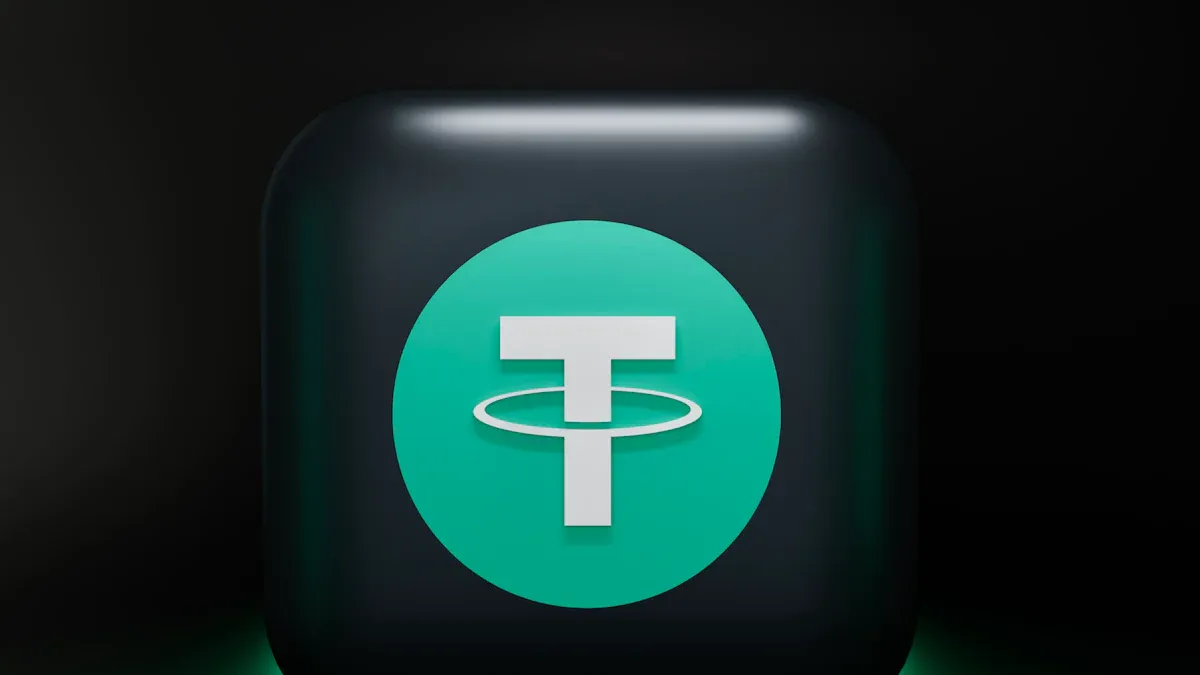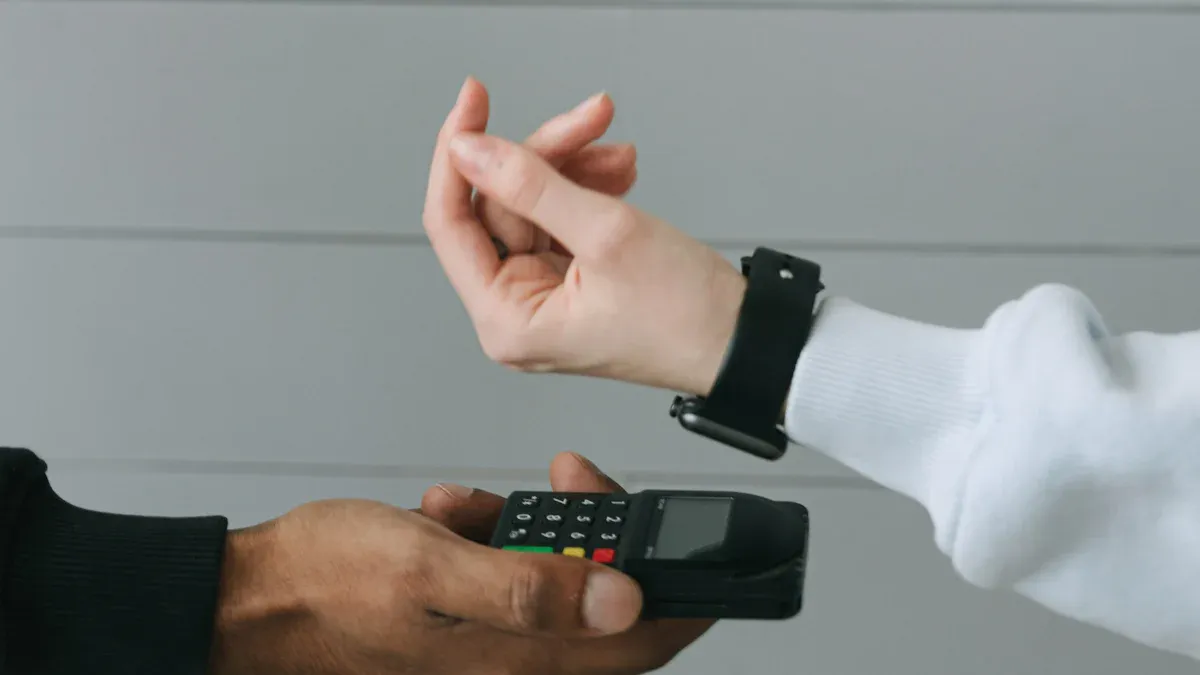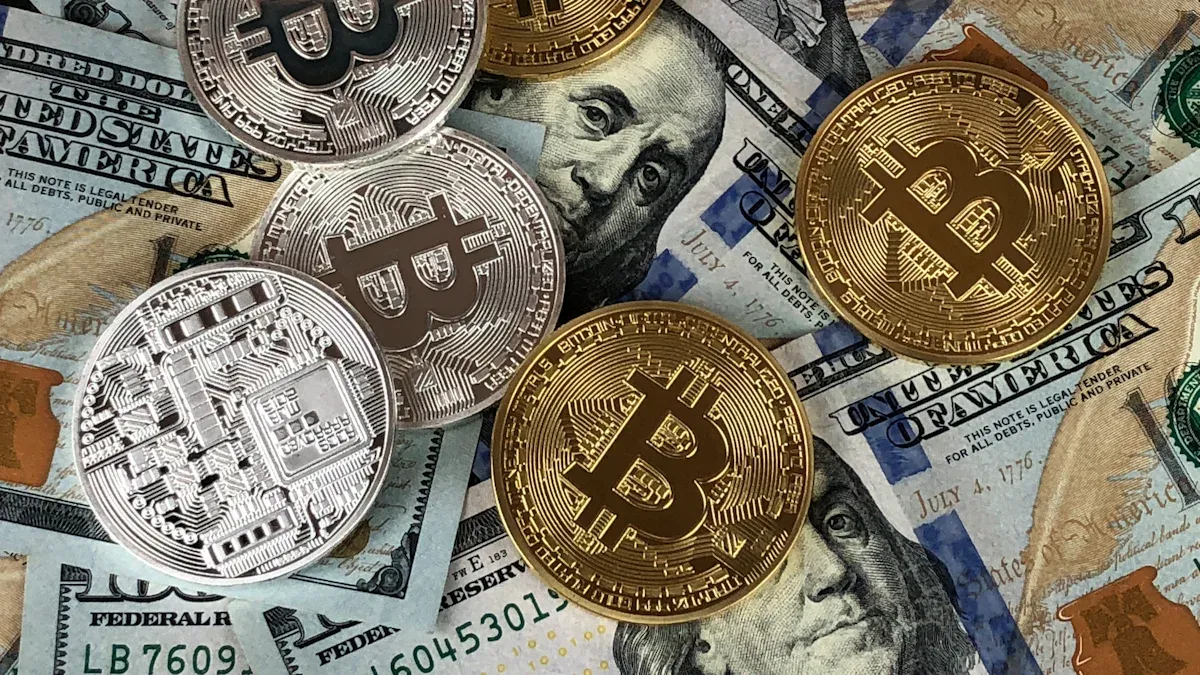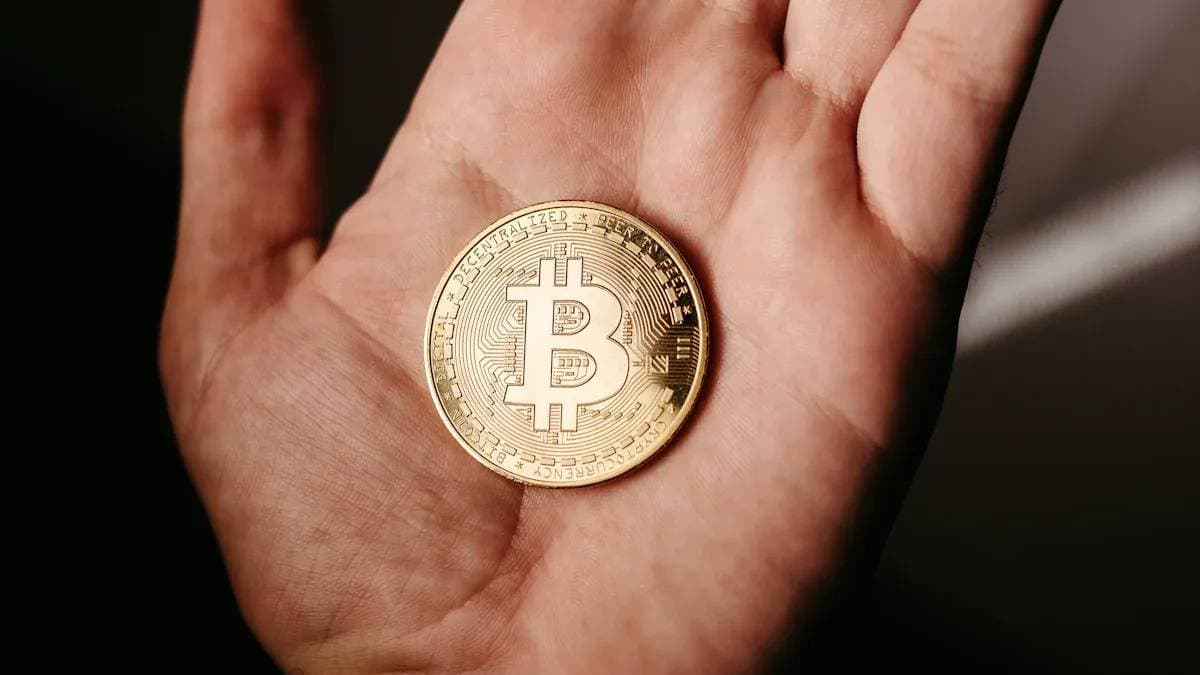- EasyCard
- Trade
- Help
- Announcement
- Academy
- SWIFT Code
- Iban Number
- Referral
- Customer Service
- Blog
- Creator
“I’m Done with Banks Forever” Real Voices from Stablecoin USDT Remittance Users

Image Source: unsplash
Have you ever thought that your cross-border remittance is quietly shrinking? The layers of fees and exchange rate differences from traditional banks are devouring your hard-earned money.
Imagine this: you send out 1000 dollars, but the bank account might only receive 950 dollars. With stablecoin USDT remittance, the final arrival can exceed 995 dollars.
You are not alone. In 2024, global remittance totals from hundreds of millions of people will exceed 685 billion dollars. Now, you have the chance to reclaim that “evaporated” money and find a better solution for yourself.
Key Points
- Traditional bank remittances have high fees, including hidden costs and unfavorable exchange rates, long arrival times, and complex processes.
- USDT remittance costs are low, usually below 0.5%, with fast arrival speeds, completable within minutes.
- USDT remittance operations are simple, mainly including selecting an exchange and wallet, purchasing USDT, transferring, and confirming the transaction.
- USDT remittance carries risks such as operational errors, platform security issues, and compliance risks; users must operate cautiously.
- USDT remittance provides an efficient, low-cost cross-border payment solution, but users need to understand and comply with local regulations.
Pain Points of Traditional Bank Remittances

Image Source: pexels
Have you also experienced moments like this? You urgently need to send money to family far away or pay an overseas service fee. You walk into the bank, full of confidence thinking everything is under control. However, days later, the recipient tells you the received amount is much less than expected. This is my “tearful history” and the shared experience of countless traditional bank users.
High Hidden Fees
The last time I remitted 1,000 dollars through a bank in Hong Kong, the fee on the bill was clearly visible. But what truly confuses people are those “invisible” fees. Your money travels through the remittance network, and every intermediary bank it passes through takes a “pluck,” usually 10 to 20 dollars. Finally, the receiving bank may charge another incoming fee.
The “Evaporation” Journey of a Remittance:
- Sending bank wire fee: $25
- Intermediary bank A fee: $15
- Intermediary bank B fee: $15
- Receiving bank incoming fee: $10
- Total: $65 vanishes!
These fees layer upon layer, quietly devouring your principal without your knowledge.
Unfavorable Exchange Rate Spreads
The bigger trap lies in the exchange rate. The “real-time exchange rate” you check online is not what the bank gives you directly. Banks provide a “retail exchange rate,” which already includes a markup ranging from 1% to 6%. This means the bank buys your dollars at a lower price and sells the target currency at a higher price, with the spread becoming its profit. This exchange rate loss is far more than you imagine.
Long Waiting Times
After the money is sent, the real agony begins. The bank tells you it takes 1 to 5 business days, but this process is full of uncertainty. Due to time zone differences, holidays, and compliance reviews, your funds may get stuck in some intermediate link. You can only refresh your account daily, anxiously waiting, unable to know the exact location and status of the funds. This sense of loss of control is tormenting.
Complex Process Restrictions
Every remittance requires preparing cumbersome materials.
- Identity proof documents
- Recipient’s detailed information
- Proof of fund source (for large remittances)
Banks also set limits on daily remittance amounts. If you need to send an amount exceeding 10,000 dollars, the bank must report to tax authorities, triggering stricter review processes. The entire process is not only time-consuming and laborious but also makes you feel like you are being interrogated rather than enjoying convenient financial services.
USDT: A Disruptive Remittance Solution

Image Source: pexels
While you are still troubled by the bank’s layers of exploitation and long waits, a disruptive solution has quietly changed the remittance methods for millions worldwide. This is the stablecoin USDT, opening a door for you to a new world of efficient, low-cost cross-border finance.
What is USDT Stablecoin
You can think of USDT (Tether) as a “digital dollar.” Its core concept is very simple: the value of each USDT is maintained at a 1:1 peg with 1 dollar.
How does it achieve this? Tether claims that for every USDT issued, its reserves increase by an equivalent dollar or other assets. This reserve mechanism aims to provide solid value support for your digital dollar. To build trust, Tether regularly publishes reserve reports, showing users the transparency of its assets.
But USDT’s real magic is that it runs on the blockchain, completely bypassing the complex intermediate networks of traditional banks. This means your money no longer needs to “travel long distances” between multiple banks but is sent point-to-point directly from your digital wallet to the recipient’s wallet, like sending an email.
Especially USDT based on the TRC-20 network (Tron chain), due to its extremely high efficiency and low cost, has become the preferred choice for stablecoin USDT remittance.
Cost Comparison: Fees as Low as 0.5%
Now, let’s look at the most intuitive change: fees. The total cost of traditional bank remittances (including wire fees, intermediary fees, and exchange rate losses) is usually as high as 4% to 8%. Using USDT, you can control costs to an astonishing 0.5% or so.
To make the gap clearer for you, here is a simple comparison:
| Item | Traditional Bank Remittance | USDT Remittance (TRC-20 Network) |
|---|---|---|
| Total Fee Rate | 4% - 8% | About 0.5% |
| Intermediary Links | Multiple intermediaries, layered fees | No intermediaries, point-to-point |
| Exchange Rate | Bank-set rate with spread | Close to 1:1 exchange, no rate loss |
| Typical Fees | $25 - $65 | Usually less than $2 |
What does this mean? For the same 1,000 dollar remittance, you might lose 50 dollars through a bank, while with USDT, your total cost may only be a 1 dollar network fee plus some exchange fees. Most of your hard-earned money safely reaches its destination.
Efficiency Comparison: From Days to Minutes
Are you fed up with the anxiety of funds in transit with unknown fate? Stablecoin USDT remittance will completely liberate you.
Say goodbye to the long wait of “3-5 business days.” USDT transfers based on the TRC-20 network usually confirm in under 3 minutes. This means from the moment you click send, the recipient can almost immediately see the money in their wallet. This sense of control and certainty is unmatched by traditional banks.
This is not distant future technology but stories happening globally right now:
- In Argentina and Venezuela, people use USDT to combat severe local currency inflation, treating it as a reliable savings tool.
- In the Philippines and Vietnam, overseas workers send wages home via USDT, bypassing expensive traditional remittance channels, allowing families to receive more money.
- In Nigeria and other African regions, merchants use USDT for cross-border trade settlements, greatly improving fund turnover efficiency.
You see, countless global users have proven with actions that USDT is not just an option but a powerful tool that genuinely solves your cross-border payment pain points.
Stablecoin USDT Remittance: Three-Step Practical Guide
The theory has excited you; now it’s time to turn ideas into action. You might think this sounds complicated, but rest assured, the entire process is much simpler than you imagine. You just need to follow the three clear steps below to fully master this powerful new skill. Let’s start together!
Preparation: Choose Exchange and Wallet
Your first step is to build your digital financial toolkit. You need two core tools: an exchange for buying and selling USDT, and a digital wallet for securely storing and transferring USDT.
Tip: Exchange vs. Wallet
- Exchange: Like a “vegetable market” for digital currencies, where you can buy USDT with fiat currency (like dollars).
- Wallet: Like your own “digital safe,” where you have full control, used for securely storing and sending your USDT.
For beginners, choosing an app that integrates trading and wallet functions is very convenient, such as Biyapay. Such apps allow you to complete purchasing, storing, and transferring within one platform, simplifying initial operations.
If you seek higher security and control, a non-custodial wallet is your best choice. This means the private key (like your safe key) is completely in your custody. Here are some highly rated wallets that support TRC-20 USDT:
- Trust Wallet: Very user-friendly interface, easy to get started. It does not collect your personal data, and the private key is securely stored on your device.
- Exodus: Intuitive design, supports integration with hardware wallets, providing double protection for your assets.
- TronLink: As the official wallet for the TRON network, it is perfectly compatible with TRC-20 USDT and offers a browser plugin for easy computer operation.
Which tool to choose depends on your needs. You can start with an all-in-one app like [Biyapay](https://cn.biyapay.com/) to familiarize yourself with the process before moving to a professional non-custodial wallet.
Execution: Purchase, Transfer, and Confirm
With tools ready, now enter the core phase. This process is divided into three small steps: purchase USDT, transfer it to the recipient, and confirm the transaction success.
Step One: Purchase USDT
You can exchange your fiat currency for USDT on the exchange in multiple ways. Common methods include:
- Credit/Debit Card: This is the fastest way. Simply bind your card, enter the purchase amount, and verify payment.
- P2P Trading (Peer-to-Peer): You buy directly from other sellers. Choose a trusted seller, pay them via bank transfer, PayPal, etc., and they release USDT to your account.
- Bank Transfer: You can also directly fund your exchange account via bank wire and then purchase USDT.
Step Two: Transfer USDT
This is the most critical step in the entire stablecoin USDT remittance process. Assuming you have purchased USDT, now send it to the recipient’s wallet address.
- Obtain Recipient Address: Ask your recipient for their USDT receiving address. Be sure to confirm it is a TRC-20 network address, which usually starts with a capital “T”.
- Initiate Transfer: In your exchange or wallet app, select the “Send” or “Withdraw” function.
- Fill in Information:
- Select Currency: Choose USDT.
- Enter Address: Paste the recipient’s “T”-starting address. Best to use “copy-paste” or scan QR code to avoid manual input errors.
- Select Network: In network options, be sure to choose TRC-20 (TRON). Choosing the wrong network will cause permanent loss of your funds!
- Enter Amount: Input the USDT quantity you want to transfer.
- Confirm and Send: Carefully review all information, especially the address and network. After confirming no errors, enter your payment password or perform biometric verification, and click send.
About Network Fees (Gas Fee) Transferring on the TRC-20 network requires a very small amount of TRX (Tron coin) as a fee, usually less than 0.5 dollars. Most exchanges or wallets will handle it automatically; you just need to ensure sufficient balance in your account for the fee.
Step Three: Confirm Transaction
After the transfer is sent, you will get a transaction hash (TxID), a unique string of characters, like the “tracking number” for this transfer.
You can use this “number” to track your remittance on a blockchain explorer. For the TRC-20 network, the most commonly used explorer is TRONSCAN.
- Visit the
tronscan.orgwebsite. - Paste your transaction hash into the top search box.
- Click search, and you can see all details of this transaction: status (success/processing/failed), amount, sender and receiver addresses.
When the status shows “SUCCESS,” it means your money has safely arrived in the other party’s wallet. The entire process usually takes just a few minutes.
Receiving: Cash Out to Local Currency
For the recipient, the final step is to exchange the received USDT into their local fiat currency, such as dollars, euros, or Hong Kong dollars. The most common method is P2P trading.
Sell USDT via P2P Platform
P2P platforms allow direct trading between users, with the platform acting as a “guarantor” to ensure transaction security.
The operation process is as follows:
- Choose Platform and Buyer: The recipient finds buyers willing to purchase USDT with local currency on a reliable P2P platform (such as OKX P2P, Binance P2P, or Biyapay’s P2P market). They can select based on exchange rate and the other party’s reputation.
- Create Sell Order: The recipient creates a sell order, stating the USDT quantity to sell and the desired receiving method (e.g., Hong Kong bank transfer, FPS, etc.).
- Wait for Buyer Payment: After the buyer accepts the order, the platform temporarily “locks” the recipient’s USDT. The buyer then pays the recipient via the agreed method (such as bank transfer).
- Confirm Receipt and Release: The recipient must log into their own bank account and personally confirm the money has arrived. After confirming no errors, return to the P2P platform and click “Confirm Receipt and Release USDT.” The platform will transfer the locked USDT to the buyer.
Safety First! In P2P trading, always follow the golden rule of “confirm receipt first, then release tokens.” Do not trust any screenshots or verbal promises; only trust the balance shown in your own bank account.
Through these simple three steps, you complete an efficient, low-cost cross-border remittance. You not only save money but also gain precious time and inner peace.
Risks and Warnings
You have seen the huge advantages of USDT remittance, but true wisdom lies in not only leveraging its benefits but also knowing how to avoid its risks. Master this knowledge, and you can confidently navigate the digital financial ocean like an experienced captain.
Risk of Operational Errors
In the blockchain world, you are the sole master of your funds. This also means you must take full responsibility for every action.
Golden Rule: Blockchain transactions are irreversible. Once sent, there is no “undo” button or customer service to help recover.
The two most common errors are:
- Address Error: A spelling mistake when manually entering the address, or your computer infected with a “clipboard hijacking” virus, can send your funds to a stranger’s address, resulting in permanent loss.
- Wrong Network Selection: You may send USDT to the correct address but select the wrong blockchain network during transfer (e.g., mistakenly selecting ERC-20 for TRC-20 tokens). Although the transaction record shows “success,” the funds will not appear in the recipient’s wallet.
Therefore, before clicking “send,” be sure to double-check the address and network; this is the first line of defense for protecting your assets.
Risks of Trading Platforms
The exchange you choose is like your temporary bank in the digital world. However, not all “banks” are indestructible. History has sounded the alarm, with former industry giants like Mt. Gox and FTX collapsing due to hacker attacks or internal issues, causing heavy user losses.
Your task is to choose a platform that prioritizes security. A trustworthy exchange will proactively take measures to protect your funds:
- Two-Factor Authentication (2FA): Even if your password leaks, this is the last solid defense for your account.
- Cold Storage: Storing most user funds offline in “cold wallets” effectively resists network hacker attacks.
Be sure to enable all available security settings to add an unbreakable lock to your account.
Local Compliance Risks
Using cryptocurrency is not in a “lawless land.” You need to understand and comply with regulations in your location. Different countries and regions have vastly different attitudes toward it.
In some regions with strict capital controls, such as mainland China, any cryptocurrency-related business activities may be considered illegal financial activities. Participating in such transactions not only lacks legal protection but may also face administrative penalties.
In most other regions, compliant exchanges must follow anti-money laundering (AML) and know your customer (KYC) regulations. This means you need to submit identity proof to verify your account. This is to prevent financial crimes and a necessary measure to protect the healthy development of the entire ecosystem. Before any operation, be sure to take time to understand local policies.
Say goodbye to banks’ high fees and long waits. Stablecoin USDT remittance shows overwhelming advantages, helping users in Nigeria, Argentina, and elsewhere combat inflation and gain true financial autonomy. Of course, it is not zero-risk. Every operation requires caution. After full understanding, you too can transform from an anxious waiter into a master who handles everything in minutes.
FAQ
Can USDT really be exchanged 1:1 with the dollar?
Tether claims its reserve assets back the value of USDT. On exchanges or P2P markets, you can see its price fluctuates slightly around 1 dollar. This provides you with a relatively stable digital dollar, allowing peaceful trading in the digital world.
Will there be exchange rate losses when buying and selling USDT?
When trading on P2P platforms, there is a slight difference between buy and sell prices. This spread is the merchant’s profit, usually far less than banks’ exchange rate markups. Choosing reputable merchants ensures a fair price, maximizing preservation of your fund value.
What if I select the wrong network or enter the wrong address?
Blockchain transactions cannot be revoked, and funds will be permanently lost. You must double-check the address and network (such as TRC-20) before sending. Developing habits of “copy-paste” and secondary confirmation allows you to fully control your fund security and avoid unnecessary losses.
Besides network fees, are there other hidden fees?
The main fee is the network fee during transfer (usually less than 1 dollar). When cashing out on P2P platforms, the buy-sell spread is another cost. But the entire process has no intermediary fees, all costs are clearly visible, letting you completely bid farewell to banks’ hidden charging modes.
*This article is provided for general information purposes and does not constitute legal, tax or other professional advice from BiyaPay or its subsidiaries and its affiliates, and it is not intended as a substitute for obtaining advice from a financial advisor or any other professional.
We make no representations, warranties or warranties, express or implied, as to the accuracy, completeness or timeliness of the contents of this publication.




Contact Us
Company and Team
BiyaPay Products
Customer Services
BIYA GLOBAL LLC is a licensed entity registered with the U.S. Securities and Exchange Commission (SEC No.: 802-127417); a certified member of the Financial Industry Regulatory Authority (FINRA) (Central Registration Depository CRD No.: 325027); regulated by the Financial Industry Regulatory Authority (FINRA) and the U.S. Securities and Exchange Commission (SEC).
BIYA GLOBAL LLC is registered with the Financial Crimes Enforcement Network (FinCEN), an agency under the U.S. Department of the Treasury, as a Money Services Business (MSB), with registration number 31000218637349, and regulated by the Financial Crimes Enforcement Network (FinCEN).
BIYA GLOBAL LIMITED is a registered Financial Service Provider (FSP) in New Zealand, with registration number FSP1007221, and is also a registered member of the Financial Services Complaints Limited (FSCL), an independent dispute resolution scheme in New Zealand.


















